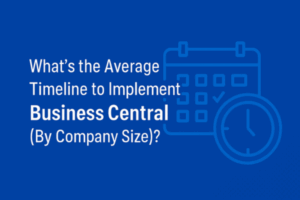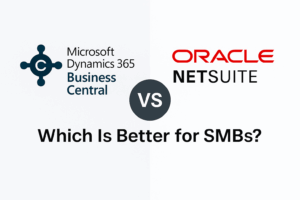Understanding the Basics: What is Supply Chain and ERP
The success of any distribution operation heavily relies on a deep understanding of the supply chain and the role of Enterprise Resource Planning (ERP) systems within it. In this section, we will explore the basics of supply chain management and provide an overview of ERP solutions.
What is a Supply Chain?
A supply chain refers to the network of organizations, resources, activities, and technologies involved in the production, procurement, transformation, and delivery of goods or services to the end consumer. It encompasses various stages, including sourcing, manufacturing, warehousing, transportation, and distribution. Understanding the flow of products and information throughout the supply chain is essential for optimizing efficiency and meeting customer demands.
What is ERP?
Enterprise Resource Planning (ERP) is a comprehensive software system that integrates and manages core business processes, including finance, human resources, procurement, manufacturing, and distribution, in a centralized database. ERP solutions provide real-time visibility and control over various aspects of the business, facilitating data-driven decision-making and streamlining operations.
The Role of ERP in Supply Chain Management
ERP systems play a vital role in supply chain management by providing a unified platform to manage and optimize key processes. They enable seamless collaboration and communication across different departments and stakeholders, ensuring smooth coordination from procurement to delivery. With real-time data integration and analytics capabilities, ERP solutions empower organizations to make informed decisions, improve operational efficiency, and enhance customer satisfaction.
Throughout the rest of this blog post, we will delve deeper into the specific ways ERP solutions revolutionize distribution and explore their impact on inventory management, demand forecasting, supplier and customer relationships, and real-time data analysis. But first, let’s explore the fundamentals of ERP and its intersection with supply chain management.
The Role of ERP in Supply Chain Management
ERP systems play a crucial role in optimizing supply chain management processes. By providing a centralized and integrated platform, ERP solutions enable businesses to streamline operations, enhance efficiency, and drive overall performance. In this section, we will delve into the key aspects of ERP’s role in supply chain management.
What is ERP and How Does it Work?
ERP, or Enterprise Resource Planning, is a software system that integrates various core business functions and processes into a single unified platform. It enables organizations to manage and automate activities such as finance, accounting, human resources, procurement, manufacturing, and distribution. ERP systems work by utilizing a centralized database that stores and processes data from different departments, allowing for real-time information sharing and collaboration.
The Intersection of ERP and Supply Chain Management
Supply chain management involves the coordination of multiple activities, including procurement, production, inventory management, logistics, and customer service. ERP systems provide a holistic approach to managing these activities, offering a comprehensive view of the supply chain from end to end. By integrating supply chain functions into the ERP system, organizations can achieve better visibility, control, and synchronization of their operations, leading to improved efficiency and customer satisfaction.
Benefits of ERP in Supply Chain
Implementing an ERP system in supply chain management brings numerous benefits to organizations. Some key advantages include:
1. Streamlined Processes and Improved Efficiency
ERP systems automate manual tasks and provide standardized processes, reducing the likelihood of errors and delays. By eliminating redundant activities and optimizing workflows, organizations can achieve significant improvements in operational efficiency.
2. Enhanced Collaboration and Communication
ERP solutions enable seamless communication and collaboration across different departments and stakeholders involved in the supply chain. This facilitates better coordination, faster decision-making, and improved overall performance.
3. Real-Time Data Visibility and Analytics
ERP systems integrate data from various sources, providing real-time visibility into supply chain operations. This allows organizations to monitor inventory levels, track shipments, analyze demand patterns, and make data-driven decisions to optimize supply chain performance.
4. Cost Reduction and Financial Management
By automating processes and improving efficiency, ERP systems can help reduce costs associated with inventory management, procurement, and logistics. Additionally, ERP solutions provide robust financial management capabilities, enabling organizations to track expenses, manage budgets, and improve financial planning and forecasting.
5. Improved Customer Satisfaction
Efficient supply chain management facilitated by ERP systems leads to improved customer satisfaction. Organizations can ensure timely delivery, accurate order fulfillment, and proactive communication with customers, thereby enhancing the overall customer experience.
In the next section, we will explore how ERP solutions revolutionize the distribution process by streamlining inventory management.
How ERP Solutions Revolutionize Distribution
ERP solutions play a transformative role in revolutionizing the distribution process. By leveraging advanced functionalities and capabilities, these systems enable organizations to optimize inventory management, improve demand forecasting, enhance supplier and customer relationships, and facilitate real-time data analysis. In this section, we will explore how ERP solutions revolutionize distribution in these key areas.
Streamlining Inventory Management
Inventory management is a critical aspect of distribution operations. ERP solutions provide organizations with real-time visibility into inventory levels, locations, and movements. By automating inventory tracking and management processes, ERP systems enable businesses to optimize stock levels, reduce carrying costs, and avoid stockouts or overstocking. Additionally, ERP solutions facilitate inventory optimization through features like demand forecasting, automatic replenishment, and efficient order management, ensuring that the right products are available at the right time.
Improving Demand Forecasting
Accurate demand forecasting is essential for effective distribution planning. ERP systems leverage historical data, customer trends, and market insights to generate forecasts that help organizations make informed decisions about procurement, production, and inventory management. By incorporating machine learning and predictive analytics capabilities, ERP solutions can refine demand forecasts over time, leading to improved accuracy and reduced forecasting errors. This enables organizations to optimize inventory levels, minimize stockouts, and enhance customer satisfaction.
Enhancing Supplier and Customer Relationships
Effective supplier and customer relationship management is crucial for successful distribution. ERP solutions provide organizations with a centralized platform to manage interactions with suppliers and customers. By integrating communication channels, order management, and performance tracking, ERP systems enable organizations to streamline procurement activities, negotiate favorable terms, and enhance collaboration with suppliers. Similarly, ERP solutions facilitate efficient order processing, accurate invoicing, and proactive communication with customers, leading to improved customer satisfaction and loyalty.
Facilitating Real-Time Data Analysis
In today’s fast-paced distribution landscape, real-time data analysis is vital for making timely and informed decisions. ERP solutions offer robust reporting and analytics capabilities, enabling organizations to monitor key performance indicators (KPIs), track operational metrics, and gain actionable insights into their distribution processes. By providing dashboards, data visualization tools, and drill-down capabilities, ERP systems empower organizations to identify trends, spot bottlenecks, and make data-driven decisions to optimize distribution operations.
In the next section, we will explore the process of implementing ERP systems for distribution, including selecting the right solution, preparing for implementation, and overcoming potential challenges.
Implementing ERP Systems for Distribution
Implementing ERP systems for distribution requires careful planning, thorough preparation, and effective execution. In this section, we will explore the key steps involved in implementing ERP solutions for distribution, including choosing the right ERP solution, preparing for implementation, and overcoming potential challenges.
Choosing the Right ERP Solution
Selecting the appropriate ERP solution for distribution is a critical first step in the implementation process. Consider the following factors when evaluating ERP vendors and solutions:
1. Industry-Specific Functionality
Look for ERP solutions that offer industry-specific features and functionalities tailored to the unique requirements of the distribution industry. This ensures that the system can effectively handle processes such as inventory management, order fulfillment, and logistics.
2. Scalability and Flexibility
Consider the scalability and flexibility of the ERP solution to accommodate future growth and changing business needs. The system should be able to adapt to evolving distribution requirements and support expansion into new markets or product lines.
3. Integration Capabilities
Ensure that the ERP solution can seamlessly integrate with existing systems and technologies used in your distribution operations. This includes integration with e-commerce platforms, warehouse management systems (WMS), and other third-party applications.
4. User-Friendly Interface
Look for an ERP system with an intuitive and user-friendly interface. This will ease the adoption and training process for employees, ensuring that they can effectively utilize the system to maximize its benefits.
5. Vendor Reputation and Support
Evaluate the reputation and track record of the ERP vendor. Consider factors such as customer reviews, vendor stability, and the availability of ongoing support and maintenance services.
Preparation and Training for Implementation
Once the ERP solution is selected, thorough preparation and training are essential for a successful implementation. Consider the following steps:
1. Define Implementation Goals
Clearly define the goals and objectives of the ERP implementation project. This will provide a roadmap for the entire process and help align the project with the organization’s strategic objectives.
2. Assemble an Implementation Team
Establish a cross-functional team responsible for overseeing the implementation process. This team should include representatives from various departments, including distribution, IT, finance, and operations.
3. Data Cleansing and Migration
Cleanse and prepare data from existing systems for migration to the new ERP solution. This involves ensuring data accuracy, consistency, and completeness before transferring it to the new system.
4. Customization and Configuration
Work closely with the ERP vendor to customize and configure the system to meet specific distribution requirements. This may involve tailoring workflows, user interfaces, and reporting functionalities to align with the organization’s processes.
5. Training and Change Management
Provide comprehensive training to employees on how to use the new ERP system effectively. Develop change management strategies to address resistance to change and ensure a smooth transition.
Potential Challenges and How to Overcome Them
Implementing an ERP system for distribution can present various challenges. Some common challenges include resistance to change, data quality issues, and system integration complexities. To overcome these challenges, consider the following strategies:
1. Change Management
Develop a change management plan that includes clear communication, employee engagement, and training programs. Address concerns and resistance to change by emphasizing the benefits and involving employees in the implementation process.
2. Data Cleansing and Validation
Allocate sufficient time and resources for data cleansing and validation activities. Conduct thorough data checks to ensure data accuracy and integrity before migrating to the new ERP system.
3. Comprehensive Testing
Implement a robust testing process to identify and address any system issues or bugs before going live. This includes unit testing, system integration testing, and user acceptance testing.
4. Continuous Support and Monitoring
Provide ongoing support and monitoring after the ERP system is implemented. This includes addressing user queries, troubleshooting issues, and continuously monitoring system performance to ensure optimal functionality.
By following these implementation best practices and addressing potential challenges proactively, organizations can successfully implement ERP systems for distribution and leverage their benefits in streamlining operations, improving efficiency, and enhancing customer satisfaction.
In conclusion, ERP solutions offer a comprehensive and integrated approach to managing distribution operations. From streamlining inventory management to improving demand forecasting, enhancing supplier and customer relationships, and facilitating real-time data analysis, ERP systems play a vital role in revolutionizing the distribution process. By carefully selecting the right ERP solution, preparing for implementation, overcoming potential challenges, and learning from real-world case studies, organizations can master the supply chain and drive success in the dynamic world of distribution.


















